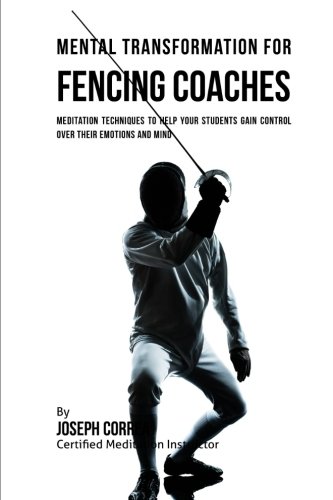
Ice Skating Training Drills: Mastering the Ice
Ice skating, a seemingly graceful dance on the ice, requires rigorous training and dedicated practice. Beyond the artistry and elegance, lies a complex interplay of balance, strength, speed, and technique. Mastering ice skating isn’t simply about gliding; it’s about controlling your body, harnessing momentum, and executing precise movements with power and finesse. This article delves into a comprehensive range of ice skating training drills, categorized for clarity and designed to improve various aspects of your skating.
I. Fundamental Skills & Balance Drills:
Before tackling complex maneuvers, a solid foundation in fundamental skills is crucial. These drills focus on balance, posture, and basic movements, forming the bedrock of advanced techniques.
-
One-Foot Balance: This seemingly simple exercise is surprisingly challenging. Start by standing on one foot, keeping your knee slightly bent and your core engaged. Focus on maintaining a balanced posture, avoiding any swaying. Gradually increase the duration of your balance hold. Progress to performing this drill while gliding slowly forward. This improves stability and strengthens leg muscles crucial for maintaining balance on the ice.
-
Forward and Backward Crossovers: This drill helps develop the fundamental crossovers, crucial for generating speed and changing direction. Start by practicing forward crossovers, bringing one skate in front of the other, pushing off with each stride. Maintain a slight bend in your knees and a forward lean. Repeat the same process for backward crossovers, emphasizing a smooth transition between skates. Focus on maintaining a balanced posture throughout.
-
Snowplow Stops: A vital skill for controlling speed and coming to a safe halt, the snowplow stop involves pressing your skates inward, creating friction to slow down. Start at a slow speed, gradually increasing as you gain confidence. Practice this drill on both forward and backward motions, ensuring your posture remains controlled throughout.
-
Edge Control Drills: Mastering edge control is essential for precise movements and executing turns with accuracy. Practice gliding on the inside and outside edges of your skates, focusing on maintaining a balanced posture and controlled pressure on the edges. Vary the speed and duration of the edge gliding.
II. Speed and Agility Drills:
Once fundamental skills are established, incorporating speed and agility drills enhances performance and boosts overall skating ability.
-
Speed Skating Drills: Focus on long, powerful strides, maintaining a forward lean and maximizing momentum. Practice maintaining a consistent speed over longer distances. Incorporate short bursts of acceleration and deceleration to improve speed control.
-
Agility Drills: Agility cones or markers can be used to create a course for practicing quick turns and changes in direction. Focus on executing sharp, precise turns, maintaining balance and control throughout the drill. Gradually increase the complexity of the course to challenge your agility and responsiveness.
-
Backward Skating Drills: Backward skating requires more balance and control. Start with slow, controlled backward glides, gradually increasing speed as you feel more confident. Practice turning and changing directions while skating backward.
-
Power Skating Drills: These drills aim to improve power and strength, essential for generating speed and executing powerful movements. Incorporate exercises like knee lifts, butt kicks, and high knees while skating forward.
III. Advanced Maneuvers and Jumps:
With a strong foundation and improved speed and agility, skaters can progress to advanced maneuvers and jumps. These drills require precision, strength, and a well-developed sense of balance.
-
Turns: Practice various types of turns, including three-turns, mohawks, and one-foot turns. Focus on maintaining edge control and body posture throughout the turns. Start slowly, gradually increasing speed and complexity.
-
Spins: Mastering spins involves balance, rotation, and edge control. Start with simple spins, focusing on maintaining a tight, upright posture and controlled rotation. Gradually increase the speed and duration of your spins. Practice various types of spins, such as forward and backward spins.
-
Jumps: Jumps require significant strength, flexibility, and technique. Begin with simple jumps like waltz jumps and toe loops, focusing on proper takeoff and landing techniques. Gradually progress to more complex jumps, such as axels and lutzes, under the guidance of a qualified coach.
IV. Off-Ice Training:
Off-ice training is equally crucial for strengthening muscles, improving flexibility, and enhancing overall fitness, which directly translates to on-ice performance.
-
Strength Training: Focus on strengthening leg and core muscles, crucial for balance, power, and stability on the ice. Include exercises like squats, lunges, planks, and core rotations.
-
Flexibility and Balance Exercises: Improve flexibility through stretching exercises focusing on hamstrings, quads, and hip flexors. Enhance balance through exercises such as single-leg stands, balance board exercises, and yoga poses.
-
Cardiovascular Training: Maintain cardiovascular fitness through activities such as running, cycling, or swimming. This improves endurance and stamina on the ice.
-
Plyometrics: Plyometric exercises, which involve explosive movements, enhance power and agility. Include exercises like jump squats, box jumps, and lateral bounds.
V. Safety Precautions and Coaching:
Safety should always be the top priority. Always wear appropriate safety gear, including a helmet, and skate in well-maintained ice rinks. It’s highly recommended to seek guidance from a qualified ice skating coach. A coach can provide personalized instruction, correct technique flaws, and ensure safe progression through the drills. They can adapt the drills to your individual needs and skill level, preventing injuries and maximizing your progress.
Conclusion:
Mastering ice skating is a journey that demands consistent effort, dedication, and a structured approach to training. By diligently practicing these drills and incorporating off-ice training, skaters can significantly improve their skills, enhance their performance, and enjoy the beauty and thrill of gliding across the ice. Remember to listen to your body, prioritize safety, and seek professional guidance to ensure a safe and rewarding skating experience. With patience, perseverance, and the right training regimen, you can unlock your full potential on the ice and achieve your skating goals.



